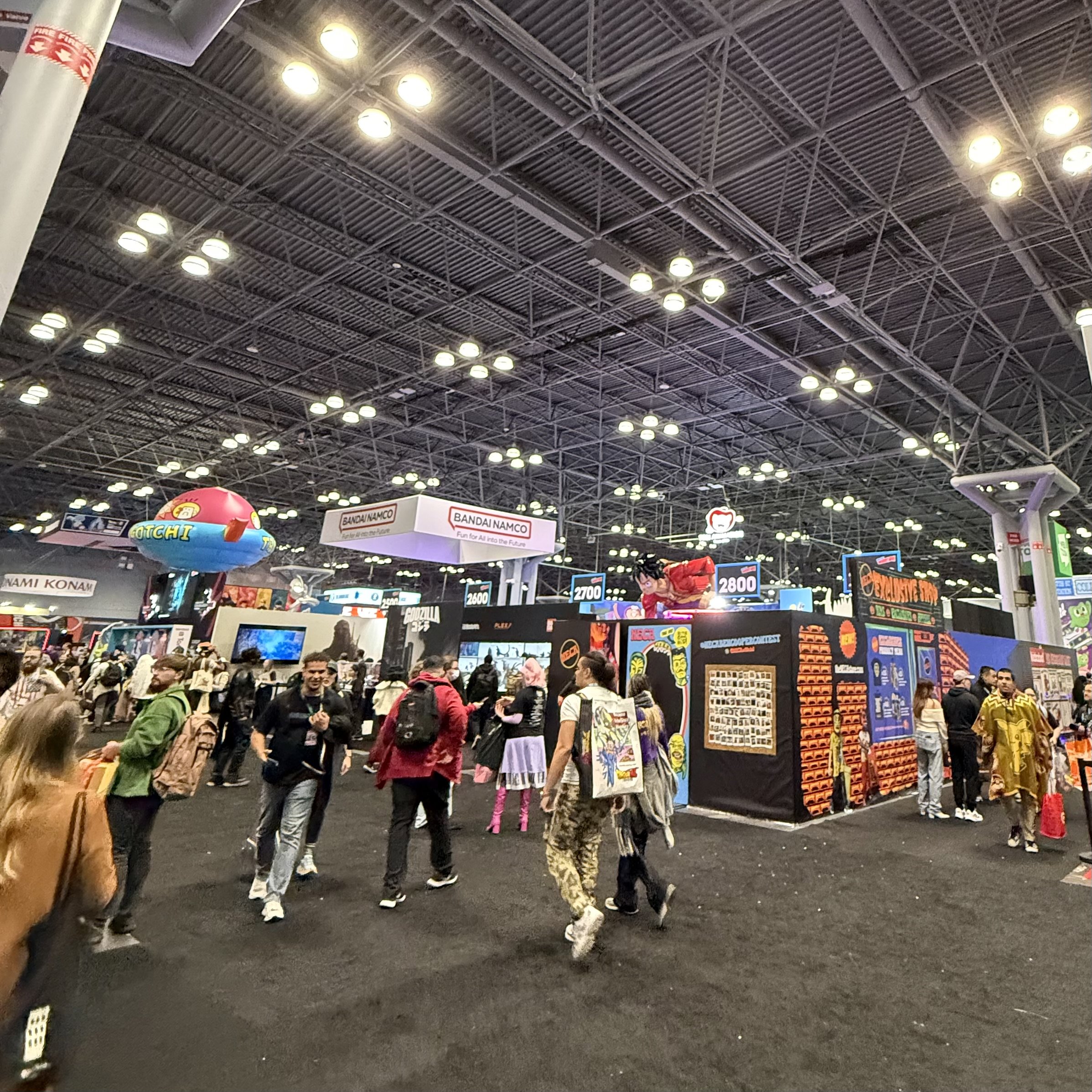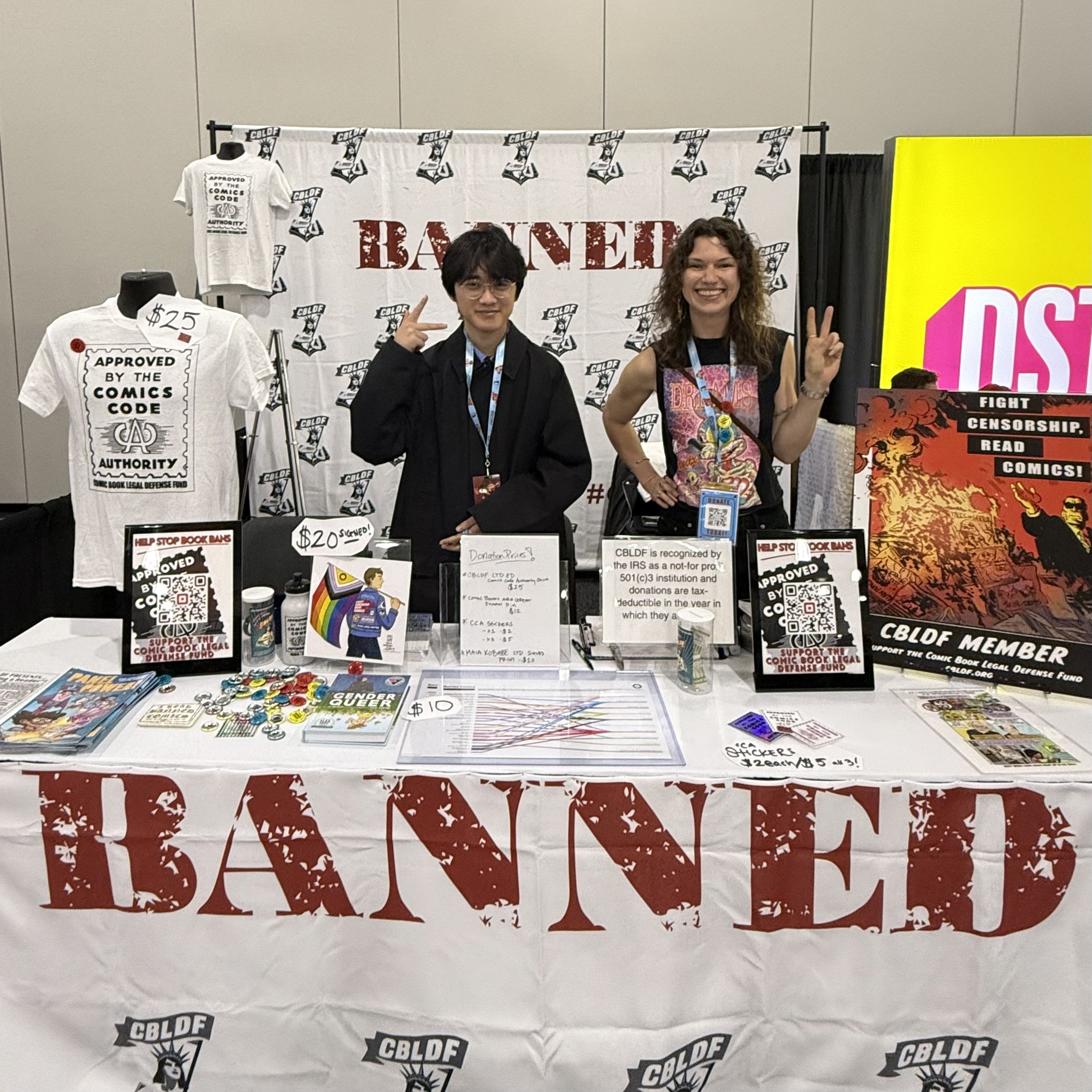5 Ways New York Comic Con is Great for Indie Comics
This wasn’t even the busiest day.
Pages and Panels was selected to cover the 2024 New York Comic Con (NYCC), and the experience was nothing short of impressive. I attended Thursday and Friday as I wanted to go when the crowds were not as full as the weekend—a move that was probably for the best as representatives from NYCC reported more than 200,000 attendees filled the Jacob Javits Convention Center throughout the entirety of the event.
This was my first time going to NYCC, and as someone who is used to Texas comic conventions that are 80% smaller than what New York City offers, it was overwhelming at first. Fortunately, there were plenty of booths to help direct attendees and part of the fun was getting caught up in the cool cosplays or seeing the impressive booths that companies put together.
After dozens of interviews, tens of thousands of steps, and losing my voice by the end of the second day, I left feeling like NYCC is great for indie comics.
The best souvenir from NYCC.
Small Press on the Big Floor
The first standout aspect of the convention was the amount of comic book content. As a comic book fan, I will always hope for more, but to find self-publishing companies such as Aviña Comics or Kwento Comics on the main floor, not too far from companies like Mad Cave Comics or Global Comix, felt like NYCC wants to give opportunities to comic book companies paving their own path. At first I felt it was strange to have “Small Press” separate from Artist Alley, but I hope the higher foot traffic meant more exposure.
The only moment this section was probably this sparse.
Artist Alley is Where It’s At
Artist Alley was stuffed full of talented writers and artists, many of whom are down to earth and love connecting with fans. While the location of Artist Alley isn’t quickly accessible—it’s basically in the lower level off to the side—I couldn’t think of where else Artist Alley could fit and have enough space for the hundreds of creators who produce top tier titles with publishers like Image Comics, BOOM! Studios, or new kid on the block, DSTLRY.
Talent, talent, everywhere.
The Party Openers
Walking into Artist Alley meant being greeted by booths like DSTLRY, the Comic Book Legal Defense Fund (CBLDF), and Tiny Onion before even seeing the aisle of comic book creators. Personally, I felt this elevated the experience, especially given the common theme of indie comics among the booths. For those unaware of the amazing titles from Tiny Onion and DSTLRY, or the legal challenges CBLDF faces for indie titles in the United States, it felt like a strong introduction for newcomers to see how indie comic books are a force to be reckoned with.
The Comic Book Legal Defense Fund, fighting for our rights to read comics.
The Pro-Panels
As Press, I was invited to attend the ICV2 Insider Talks where comic books sales data was presented for the big two (Marvel and DC Comics) as well as author titles such as Something is Killing the Children from BOOM! Studios. I found the data from the research organization to be tell an interesting story about trends in comic books sales that I had always assumed, but never had the research to back it up. The TL;DR version is that comic book sales are a funnel, with trades or collected editions taking majority of the top and periodicals—or single issues—being a smaller portion as the funnel narrows at the bottom. The research presented during the 30 minute segment I attended didn’t just provide data about how indie comics are making an impact, but created an interesting distinction of pre and post-Covid sales data. (This is something I will have to write about later, so be sure to check back on the Pages and Panels site.)
I didn’t have much time to coffee, so when they had some for the ICV2 panel, I couldn’t resist.
NYCC is for Everyone
I don’t mean that everyone will love NYCC. It’s big, Friday felt overcrowded, and dammit people really need to wear deodorant. But what I mean is that everyone who gives it a chance can find something that makes them feel seen—especially in the indie comic book community. Whether it was Eisner Award-winning creators willing to talk about their work, or newcomers who were just happy to talk with fans and sign a few copies, I felt right at home and in some ways felt like I was talking to old friends as I had conversations with several creators I’ve meet through my reviews or articles.
I hate taking photos of myself, so here is an awkward, “cya” to NYCC.
For anyone wanting to know whether or not I liked NYCC, I can confidently say it was a positive experience. That said, it’s a huge event and I went into the con with 2-3 goals per day and allowed for flexibility. This helped because it gave me time for spontaneous meet-ups, like my quick interview with cosplayers like Katie Wolski, or connecting with my buddy George Gustines who works at The New York Times and writes about comics often. (Yeah, there’s a selfie album on Instagram.)
There are tons of people who provide their tips and tricks, so I won’t try to list off suggestions. However, I will leave readers with this: If you decide to go to NYCC, go in with an open mind, have back-up plans, and remember to support indie comic book creators wherever you find them.







